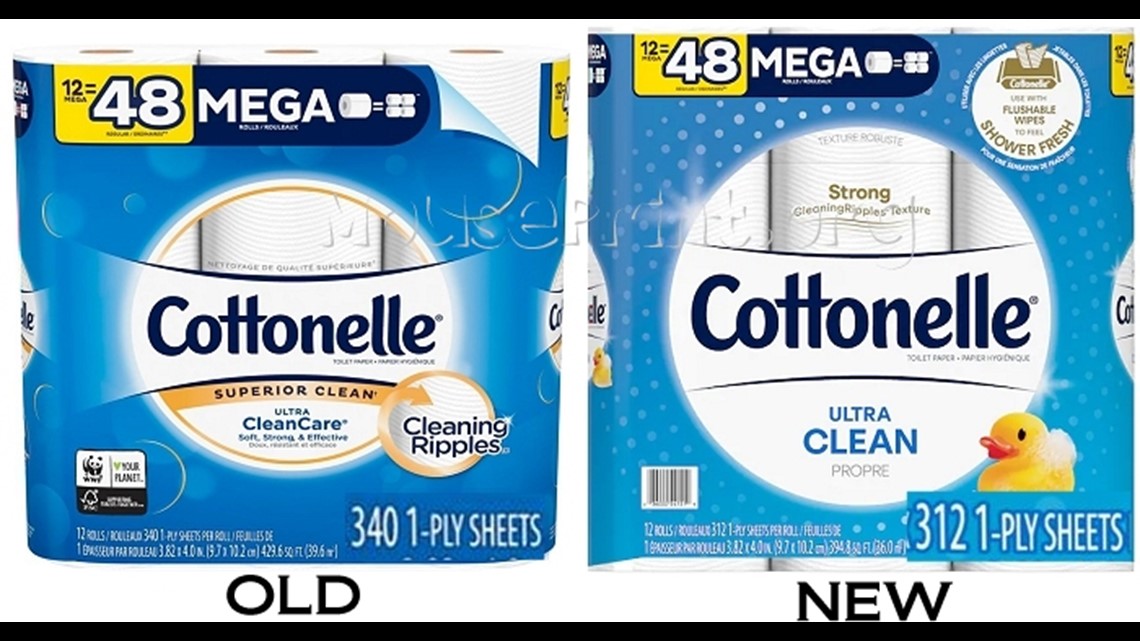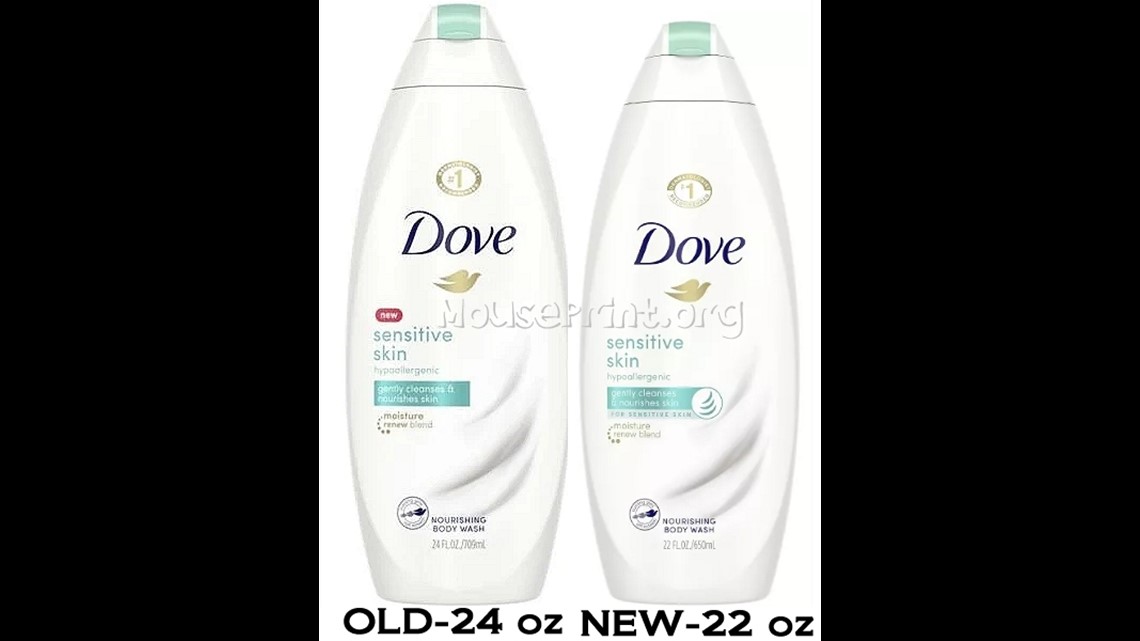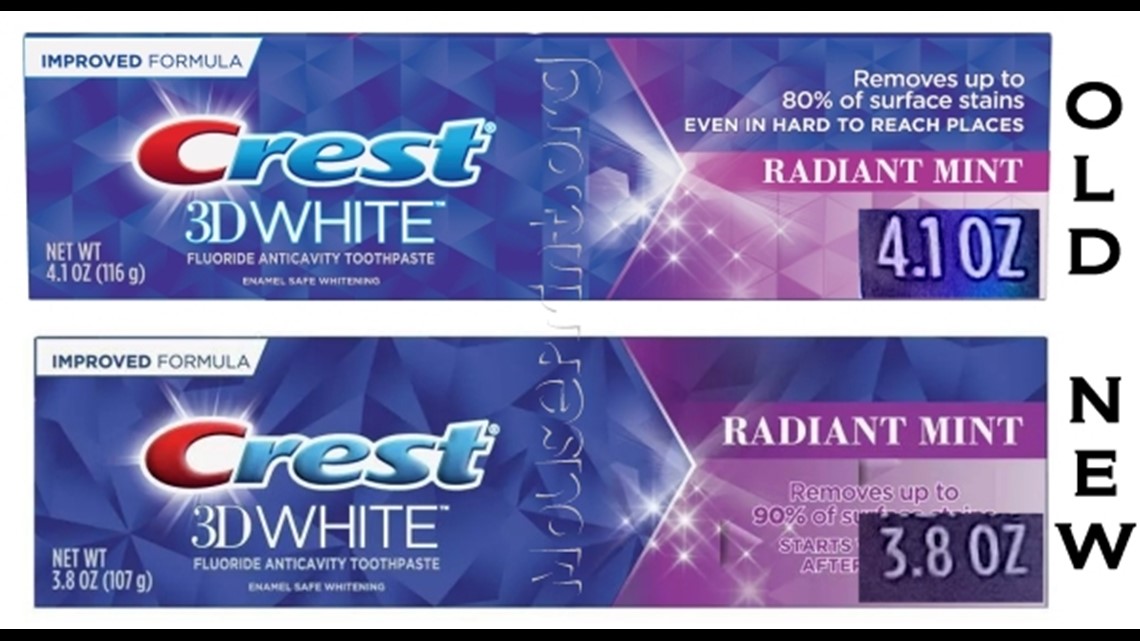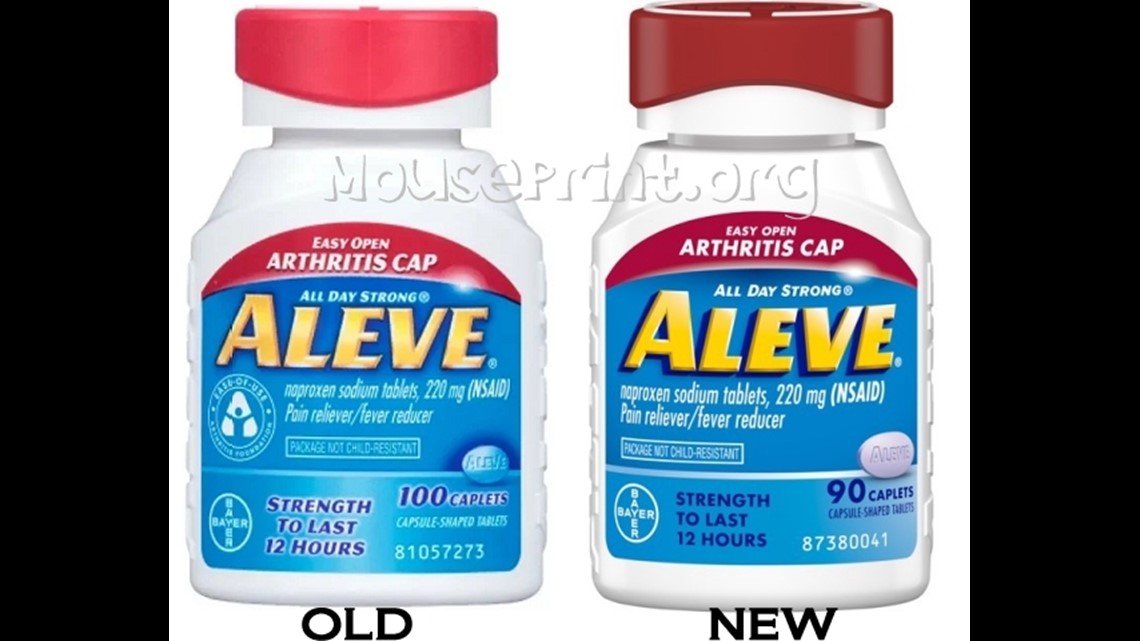SAN ANTONIO — Inflation is shrinking the amount of money in your wallet, but “shrinkflation” is also reducing the size of products you are buying. It is tricky to spot because the packaging does not change much.
Shrinkflation is a bit of a sneaky price increase because you are getting less for the same amount of money. It is happening with a lot of our essential products.
Cottonelle toilet paper lost 28 sheets but the new packaging looks bigger.


Dove body wash is 2 ounces lighter but just slightly smaller.


Crest toothpaste. Same size but the tube is eight percent smaller.


Have a headache yet?
Aleve bottles have 10 less pills.


It can be deceiving for consumers.
“I’m asked very often, is this an illegal practice?” said Edgar Dworsky of ConsumerWorld.org. “It isn’t. They comply with the law. They put the net count or the net weight right on the package. It’s up to us as sharp shoppers to pay attention to that. How else are we going to know if they’ve changed the size kind of without telling us? You’re never going to see a starburst on an item that says: ‘Look! New, smaller size.’”
Fighting shrinkflation takes some work on your part.
“Consumers have to not only be price-conscious, they have to become net weight conscious,” Dworsky said. “That means you have to look at the products you buy. Look at the net weight or the net count. I hate to say it. Memorize it. So when you go back to the store and purchase an item you can tell has it changed?”
Here is what shoppers should look for at the store to make better buying decisions:
- Compare the unit price of similar products to see which is the best price. The price per unit is usually really tiny on the price tag.
- Substitute store brands for brand names. Store brands are usually the last to shrink.
- Stock up if you can find the older, larger sizes.
- Use store apps and loyalty programs for discounts.
Products at some point may size up again but usually with a new name like “mega,” “super” or “party size.” That increase in weight then normally comes with an increase in price, which is more expensive than it use to be. Again, be aware of that price per unit cost.

